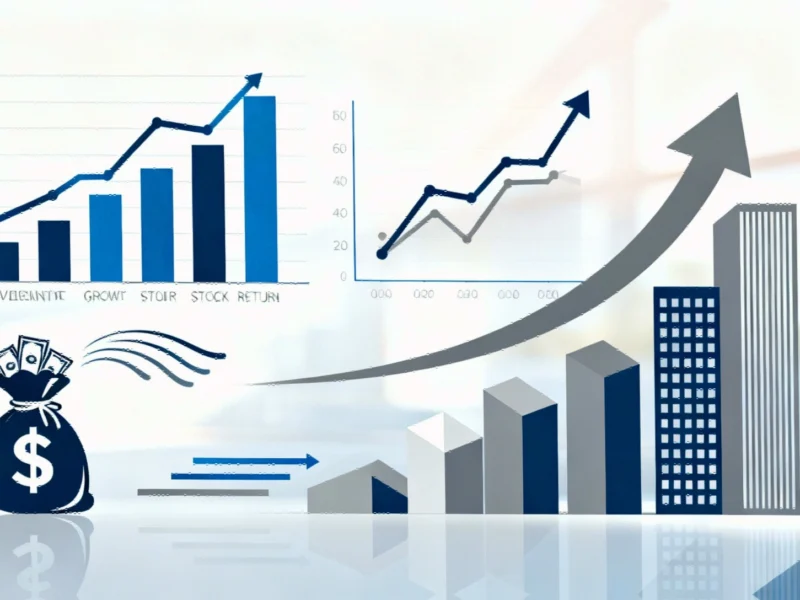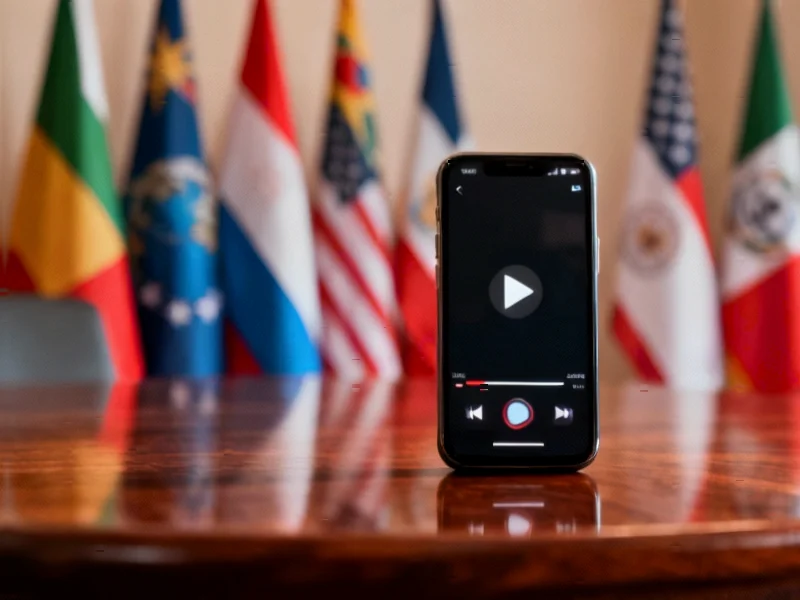According to Wccftech, Apple disclosed a $1.1 billion direct hit from tariffs during its fiscal Q4 2025 earnings, matching its previous guidance from the July quarter. The company’s CFO confirmed an additional $1.4 billion in tariff-related costs are expected for the December-ending quarter, bringing the total impact to $2.5 billion across two quarters. Despite negotiating broad-based import tariff exemptions from the Trump Administration, Apple’s complex global supply chain continues to face significant trade war pressures. The company is responding by shifting production of Vision Pro headsets to Vietnam and accelerating its US server manufacturing strategy to support AI initiatives like Private Cloud Compute and Apple Intelligence. This strategic recalibration comes as Apple expressed encouragement about recent tariff reductions on Chinese fentanyl imports.
Table of Contents
The Inevitable Exposure of Global Giants
What’s most revealing about Apple’s tariff disclosure isn’t the dollar amount itself, but what it says about the limitations of even the most sophisticated corporate diplomacy. Despite securing what many would consider favorable treatment through political channels, Apple’s sheer scale and supply chain complexity make complete insulation from trade tensions impossible. The company’s manufacturing footprint spans hundreds of facilities across multiple countries, with components crossing borders multiple times before final assembly. This creates inherent exposure points that no amount of negotiation can fully eliminate. The reality is that when you’re moving millions of units monthly through global logistics networks, even targeted exemptions leave significant portions of your operations vulnerable to trade policy shifts.
Beyond Damage Control: Long-term Manufacturing Realignment
Apple’s moves to Vietnam and increased US manufacturing represent more than just tariff mitigation—they signal a fundamental reassessment of global risk management. The Vision Pro production shift follows a pattern we’ve seen with other Apple products, where the company gradually diversifies assembly away from China for strategically important or higher-margin items. What’s particularly noteworthy is the acceleration of this timeline. Previous product transitions took years; Apple appears to be compressing these timelines significantly in response to ongoing trade uncertainty. The domestic server manufacturing initiative for AI infrastructure suggests Apple is applying similar diversification logic to its data center operations, recognizing that computational sovereignty may become as important as manufacturing sovereignty in the AI era.
The Hidden Costs Beyond the Headline Numbers
While the $2.5 billion figure captures direct tariff expenses, the true financial impact extends far beyond these immediate costs. Apple faces substantial capital expenditures to establish new manufacturing facilities, retool existing ones, and develop the logistical infrastructure to support its diversified supply chain. There are also operational efficiency losses during transition periods, potential quality control challenges with new manufacturing partners, and increased complexity in managing a more geographically dispersed operation. These indirect costs could easily match or exceed the direct tariff hits over the medium term, though they’re less visible in quarterly earnings reports. The company’s ability to absorb these expenses without significant price increases or margin compression speaks to its extraordinary financial resilience, but also raises questions about how smaller competitors might fare in the same environment.
Navigating the New Reality of Tech Geopolitics
Apple’s situation reflects a broader transformation in how technology companies must approach geopolitical risk. The era of optimizing purely for cost efficiency in global supply chains is giving way to a more complex calculus that balances efficiency against resilience and political risk. What makes Apple’s position particularly challenging is its dual identity as both an American company and a global enterprise with massive exposure to Chinese manufacturing. The ongoing China–United States trade war forces difficult choices about where to place strategic bets in an environment where political relationships can shift dramatically between administrations. Apple’s encouragement about fentanyl tariff reductions suggests the company sees potential for negotiated solutions, but its manufacturing diversification indicates it’s not betting the company on diplomatic breakthroughs.
Winners and Losers in the Tariff Environment
The tariff environment creates interesting competitive dynamics that extend beyond Apple Inc. itself. Companies with more flexible, less China-dependent supply chains may gain temporary advantages, while those locked into existing manufacturing relationships face similar cost pressures without Apple’s scale to absorb them. The moves toward Vietnam and other Southeast Asian manufacturing hubs benefit countries positioned to capture production shifts, but also risk creating new dependency relationships that could face their own geopolitical challenges down the line. For consumers, the big question is whether these costs eventually translate to higher prices or whether Apple’s margin structure is robust enough to prevent significant pass-through. The company’s historical reluctance to raise prices suggests it will absorb these costs in the near term, but sustained trade tensions could eventually force a recalibration of its premium pricing strategy.
Related Articles You May Find Interesting
- Google’s Wear OS App Purge Signals Major Platform Shift
- Apple’s Siri Overhaul Faces Critical Test in 2026 AI Race
- The Unseen Android Gatekeeper: How Google Play Services Controls Your Phone
- OpenAI’s Aardvark: The AI Security Researcher That Never Sleeps
- Apple’s $102.5B Quarter Masks Deeper Strategic Shifts



